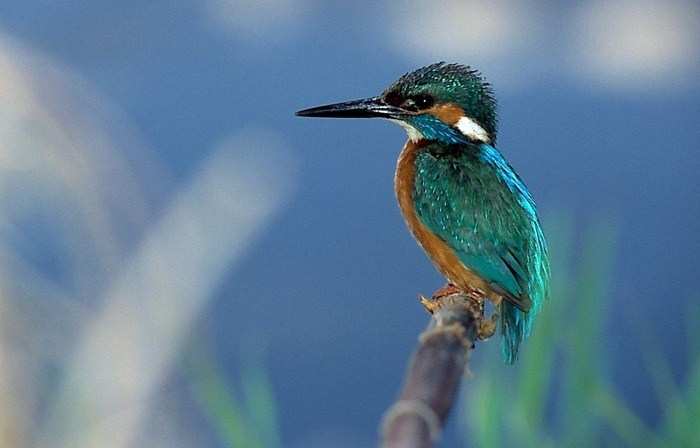International Day for Biodiversity: Common is not so common
Undoubtedly, the Nature created the beautiful planet in the Universe in form of EARTH. The complex evolutionary process of life and the evolution of most complex species – Humans, further, enriched the planet with the wisdom of safeguarding and protecting the creations with motherly attitude.

Undoubtedly, the Nature created the beautiful planet in the Universe in form of EARTH. The complex evolutionary process of life and the evolution of most complex species – Humans, further, enriched the planet with the wisdom of safeguarding and protecting the creations with motherly attitude.
History, revealed that the “Super Species” HUMANS maintained a strong relationship with all the creatures for a long period. But suddenly in the Modern Era, the bonding lost its strength in front of human-centric development which continued till date.
In the second half of the twentieth century, several initiative were undertaken by the then developed nations to safeguard the environment for the sake of survival of humans which resulted into the day celebrations.
Thus, to create mass awareness and encouraging common man to take the ownership of the issue, the Global Community under the United Nations listed several occasions to be recognized as International Days for particular issue.
In this list, December 29 was assigned as Biodiversity Day since 1993 to 2000. On 20 December 2000, the day was shifted to commemorate the adoption of the Convention on Biological Diversity (CBD) on May 22, 1992 at the Rio Earth Summit, and partly to avoid the many other holidays that occur in late December. Thus, 22 May is recognized as the International Day for Biodiversity (IBD). The theme of IBD 2013 is “Water and Biodiversity”.
The international community is making every effort in the direction of the sustainable development, especially in today’s concern with the set of Millennium Development Goals (MDGs). Water and biodiversity are among the important aspects of MDGs for the several reasons with the prime focus on survival of human race.
Truly said by the Nature Workers that Human is the most Threatened Species, and hence, human should work in the direction to protect his own race by reviving the ECO-CENTRIC approach based on the concept of sustainable development together with the INTER-RELATIONSHIP with all other components of NATURE.
History reveals the eco-traditional approach of indigenous culture. So is the case in the largest state of the Republic of India – Rajasthan. The State, with over sixty percent of its geographical part as water deficient area in form of desert in western side, adorned with one of the world’s oldest hills – Aravallis holding the water division of the India, along with the eastern plains and plateau regions with rich water sources.
The people of the State knows the importance of the water which is evident from the Water Storage and Harvesting structures in form of tankas, baoris, pokhars etc. in the dry arid zone. Further, the world famous example of the water management could be seen in the places like Bharatpur and Udaipur. The flood control system with the earthen dykes, water channels, sluice gates etc. of Bharatpur is no more to see but the remnants are still prevalent all around the city and within World Heritage site – the Keoladeo National Park.
On the other hand, water management system of Udaipur could be seen by its aquatic bodies and their connecting links. Not only these man-made aquatic systems are of due importance for the State but there are several other aquatic bodies in form of slat panes in desert region, streams in the protected areas and reservoirs in form of dams are of due importance. Thus, despite of desert state, the State has the credentials for its aquatic bodies or scientifically termed as wetlands.
The wetlands have the importance not only as the water resources but also due to their identity as an important habitat which may be natural or artificial. These habitats could be in form of ponds, lakes, reservoirs etc. with stationary water or may be in form of rivers, streams, channels etc. with moving water.
The wetlands hold instrumental proportion of biodiversity. The invisible micro-organisms to the large-sized macro-organisms from both the plant and animal kingdoms constitute the biological diversity of wetland habitat. But of course, the characteristic of the biological diversity depends on the characteristics of the wetland.
Generally, the biodiversity invisible (micro-organisms) is of less value then the biodiversity which is visible for a common man.
For example, in micro-flora like algae have low aesthetic value then the Macro-flora such as lotus. Similarly, micro-fauna like crustaceans are not important as compared to fishes or birds. Let’s consider that part only which is eye-catching for commoners.
The aesthetic value giving pleasure to common man is not so common now-a-days. Udaipur, which is considered as “Kashmir of Rajasthan” or “Venice of the East” is enriched with aquatic habitats. With the pace of blind development, it is losing its importance in terms of biodiversity. Undoubtedly, the technological interventions have made it possible to retain the characteristics of water bodies but a question is of biodiversity.
The urban lakes used to hold the tremendous diversity of organisms before 1980s. Although, decade of 1990s was also partly retained the diversity but everything lost with the advancement of 21st century. When the global community was preparing a plan to protect the species and their habitats, Udaipur was losing its importance in terms of biodiversity.
For the commoners, the animal “OTTER” will be of great importance. Commonly known by the name “OODHBILAO”, urban lakes of Udaipur lost this animal in the recent past. The cause may be several but one can’t deny the fact of mismanaged approach of local governance. Further, the ill awareness of the locals gave the chance to the policy makers and urban planners to play with the sites of rich habitats.
The most negative impact of the mismanagement approach of the administrators and urban planners was on the aquatic diversity. We lost the monsoonal calls of small creatures – the FROGS.
Today, if we want to hear the calls, we have to move outside human habitation. The crawls of snails and earthworms are no more to watch now-a-days.
The lakes which were used as wintering sites for the migratory guests are losing its attraction for the winged guests due to excessive anthropogenic pressure.
It is the time for the people to step ahead to safeguard their future by protecting the species and their habitats especially when it is concern with vital element like water. IBD 2013 is very important for the people all over globe.
Let’s make the theme lively with joining hands through LOCAL ACTION with the GLOBAL VISION!
To join us on Facebook Click Here and Subscribe to UdaipurTimes Broadcast channels on GoogleNews | Telegram | Signal





